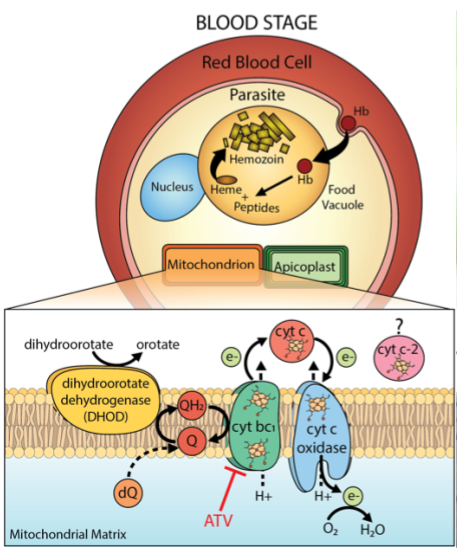This work was supported by a University of Utah CIHD P&F award DK110858 to PAS.

The mitochondrial electron transport chain (ETC) of Plasmodium malaria parasites is a major antimalarial drug target, but critical cytochrome (cyt) functions remain unstudied and enigmatic. Parasites express two distinct cyt c homologs (c and c-2) with unusually sparse sequence identity and uncertain fitness contributions. P. falciparum cyt c-2 is the most divergent eukaryotic cyt c homolog currently known and has sequence features predicted to be incompatible with canonical ETC function. We tagged both cyt c homologs and the related cyt c1 for inducible knockdown. Translational repression of cyt c and cyt c1 was lethal to parasites, which died from ETC dysfunction and impaired ubiquinone recycling. In contrast, cyt c-2 knockdown or knockout had little impact on blood-stage growth, indicating that parasites rely fully on the more conserved cyt c for ETC function. Biochemical and structural studies revealed that both cyt c and c-2 are hemylated by holocytochrome c synthase, but UV-vis absorbance and EPR spectra strongly suggest that cyt c-2 has an unusually open active site in which heme is stably coordinated by only a single axial amino acid ligand and can bind exogenous small molecules. These studies provide a direct dissection of cytochrome functions in the ETC of malaria parasites and identify a highly divergent Plasmodium cytochrome c with molecular adaptations that defy a conserved role in eukaryotic evolution.

